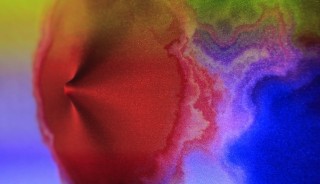Looking Outwards 3 – Eric Mackie
“Soak, Dye in Light”
I relate eyeware’s “Soak, Dye in Light” to digital painting in the way that it transforms a hands-on artistic process or media into a digital/electronic. I enjoy how the user physically becomes part of the work, pressing their parts into the canvas in order to make splotches of color. I am not completely interested in the visual result, but more so the process of how the canvas is filled. I feel as though more exploration and experimentation with what different actions do to the canvas would result in a project that is more capable of producing calculated, aesthetically satisfying result.
SOAK from everyware.kr on Vimeo.
“Cinemetrics” by Frederic Brodbeck
Brodbeck’s “Cinemetrics” is one of the most interesting and relatable forms of data visualization that I have seen recently. It breaks movies down by chapters, prominent color palettes in shots and throughout the film, and then depicts the amount of motion/action in each set of shots. I feel like the program is so successful because of its capacity to describe movies and genres of film visually without showing clips or previews and without written description. Another facet that makes the project so successful is in the nature of movies beings so accessible to the public. It is incredibly likely that a viewer of “Cinemetrics” is to have seen or heard of a movie featured in the program, making its use relatable and interesting to a broad audience.
http://cinemetrics.fredericbrodbeck.de/
cinemetrics from fb on Vimeo.
James Alliban’s “Composite”
“Composite” is software designed by James Alliban which utilizes the iPad to stylistically paint images received on the hardware’s camera. I was initially really interested in the idea of how this software is an example of the idea of art transforming from something only done by few to something widely available, and possible on-the-go (given the right software and materials). The initial screens that I saw of the software in were shown, it seemed to become more and more like just another photo-editing process to me (which, in essence, it is). For me, whether or not the visual result of “Composite” is successful as art depends on how distant the user can make their “painting” from the actual picture.action (the sketch of the statue seen early in the video) impressed me, but as more features of the software
Composite from James Alliban on Vimeo.


